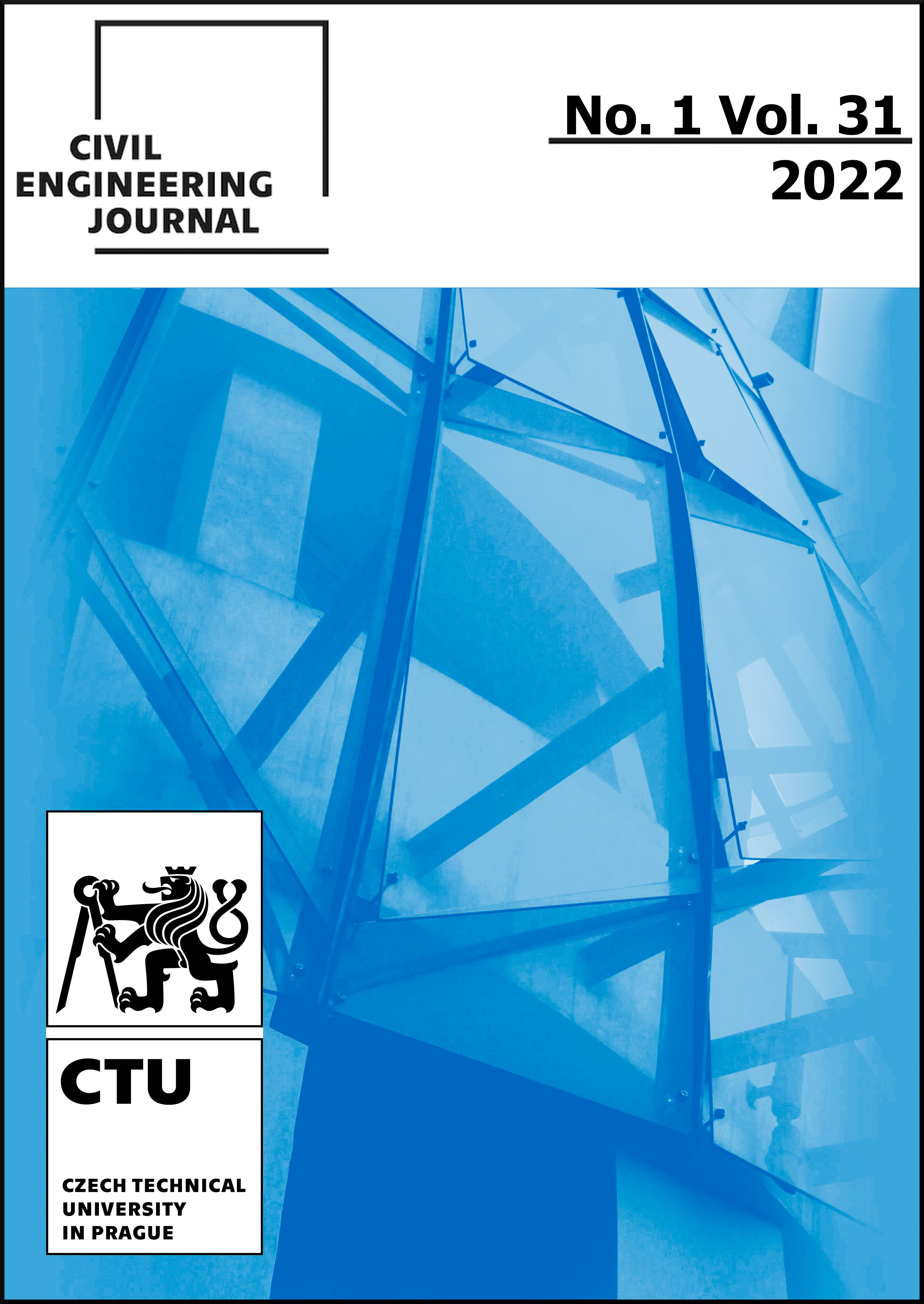FINITE ELEMENT ANALYSIS OF MECHANICAL PROPERTIES OF SPECIMEN WITH UHPC AND STUD CONNECTOR
DOI:
https://doi.org/10.14311/CEJ.2022.01.0008Keywords:
Push out test, UHPC, Stud connector, Finite element, ReinforcementAbstract
UHPC is different from ordinary concrete for mechanical properties. To study the stress state of stud connector when UHPC is used to strengthen RC beam and its influence on bearing capacity of the strengthened beam, in this paper, ABAQUS was adopted first to simulate the push-out test of stud to verify accuracy of the finite element model. The nonlinearity of materials and contact conditions was considered in the model, and then three parameters including concrete strength, stud length and stud diameter were studied. Results showed the finite element model established by surface to surface contact method was possible to simulate the force and failure of the stud connector. UHPC could improve the bearing capacity of the stud specimens obviously, and the length of stud had little effect on bearing capacity of stud while failure of the stud may occur if length of the stud was too small. The increase of stud diameter could improve bearing capacity of elastic working stage.
Downloads
References
Xu Xiuying, Jia Ying, Shi Guosong. Application analysis of ultra high performance fiber concrete in highway bridge reinforcement [J]. Highway engineering, 2020,45 (04):92-95+135.
wang J, wang J, wang J, et al.effect of concrete structure on the performance of ultra-high performance concrete [J]. International journal of Bridges, 2019,47 (02):2.
Zhang Yang, Shi Jianqun, Shao Xudong. Experimental study on flexural behavior of UHPC bolted key-tooth joint beam [J]. Highway engineering, 2019,44 (03):1-5+26.
Yang Weipeng, Li Chengjun, Song Xiaoming, Zhou Zhixiang. Experimental study on shear bearing capacity of prefabricated stud shear connectors [J]. Railway construction, 2019,59 (06):38-42.
Shi Weihua, Chen Like, Chen Di. Journal of hunan university of science and technology (natural science edition), 2019,34 (01):28-35.
Han Qinghua, Wang Yihong, Xu Jie, Xing Ying. Progress in building steel structures, 2015,17 (01):36-41.
Tian Qixian, Du Xinxi. Experimental study on pushing out short stud of high-performance concrete composite pavement [J]. Bridge construction, 2016,46 (01):40-46.
Yuan Weining, An Zhonghai, Zhang Xu. Simulation analysis of push-out test of stud based on ANSYS [J]. Industrial buildings, 2009,39 (S1):503-505+607.
Su Qingtian, Han Xu, Ren Fei. Journal of tongji university (natural science), 2014,42 (07):1011-1016.
Ministry of Housing and Urban-Rural Development, PRC. Code for Design of Concrete Structures: GB50010-2015 [S]. Beijing: China Architecture and Building Press, 2015.
Nguyen H T, Kim S E.Finite element modeling of push-out tests for large stud shear connectors[J]. Journal of Constructional Steel Research, 2009,65 (10-11):1909-1920.
Shi Chencheng, Wu Jingshu, Zhang Zeping, Ren Guopeng. Nonlinear Finite Element Analysis of Bending-shear Properties of Steel Plate Concrete Slab Based on ABAQUS [J]. Industrial construction, 2015,45 (09):7-12.
Wang Jinfeng, Zhang Aiping, Wang Wenhao. Journal of zhejiang university (engineering science), 2020,54 (11):2076-2084.
Ministry of Housing and Urban-Rural Development, PRC. Steel structure design standard: GB 50017 -- 2017 [S]. Beijing: China Architecture and Building Press, 2018.
Downloads
Published
Issue
Section
License
Copyright (c) 2022 Stavební obzor - Civil Engineering Journal

This work is licensed under a Creative Commons Attribution-NonCommercial 4.0 International License.
Authors who publish with this journal agree to the following terms:
- Authors retain copyright and grant the journal right of first publication with the work simultaneously licensed under a Creative Commons Attribution License that allows others to share the work with an acknowledgement of the work's authorship and initial publication in this journal.
- Authors are able to enter into separate, additional contractual arrangements for the non-exclusive distribution of the journal's published version of the work (e.g., post it to an institutional repository or publish it in a book), with an acknowledgement of its initial publication in this journal.
- Authors are permitted and encouraged to post their work online (e.g., in institutional repositories or on their website) prior to and during the submission process, as it can lead to productive exchanges, as well as earlier and greater citation of published work (See The Effect of Open Access).
How to Cite
Accepted 2022-04-20
Published 2022-04-30










